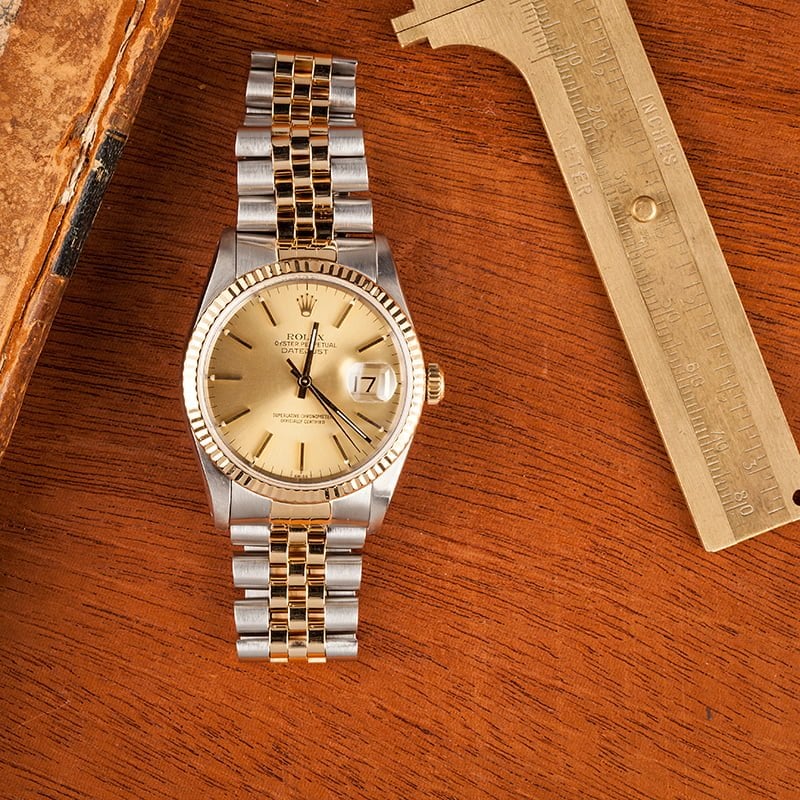Rolex, the name synonymous with luxury and precision, has a well-established reputation for creating some of the world’s most iconic timepieces. Among watch enthusiasts and collectors, vintage Rolex watches hold a special place.
They’re treasured not just for their timeless aesthetics but also for their technical innovations. One of the most frequently asked questions about these classic timepieces concerns their ability to withstand water exposure.
In essence, most vintage Rolex watches, especially those equipped with the revolutionary Oyster case, were designed to offer a degree of water resistance.
However, due to their age, the water resistance of these watches may not be as robust as when they were new. Regular servicing and seal replacements are vital to maintaining their water resistance over time.
Embark with us on this insightful journey as we delve into the world of vintage Rolex watches. From understanding what makes a Rolex vintage to examining the water resistance capabilities of these horological masterpieces, you will discover it all.
This comprehensive guide promises an enriching read that will deepen your appreciation of these exquisite timepieces.

Credit: www.bobswatches.com
Understanding Vintage Rolex Watches
Before addressing the central question, it’s crucial to understand what sets a Rolex apart as ‘vintage.’ Generally, a Rolex watch is considered vintage if it’s over 30 years old.
These watches, made from the 1910s to the late 1980s, often feature unique and charming attributes not found in their modern counterparts.
Rolex’s journey to achieving water-resistant watches was marked with several notable milestones, setting the stage for the robust water-resistant watches we see today.
Rolex’s Oyster Case: A Game Changer
In 1926, Rolex introduced a significant innovation – the Oyster case. This invention revolutionized the concept of water resistance in wristwatches.
The Oyster case was designed as a hermetically sealed case, with a screw-down crown and case back, providing an impermeable shell against water intrusion.
The first public demonstration of the Oyster’s prowess came in 1927 when Mercedes Gleitze swam the English Channel wearing a Rolex Oyster, which remained in perfect working order after the 10-hour swim.
The Birth of Rolex’s Iconic Submariner
Building upon the Oyster case’s success, Rolex introduced the Submariner in 1953. The Submariner was the first watch guaranteed waterproof to a depth of 100 meters (330 feet).
This model, specifically designed for underwater exploration and diving, was a testament to Rolex’s commitment to creating truly waterproof watches.
Water Resistance vs. Waterproof
Despite common usage, it’s important to distinguish between ‘waterproof’ and ‘water-resistant.’ No watch is truly ‘waterproof,’ as absolute imperviousness to water is impossible to guarantee over time and varying conditions.
Instead, watches are rated for their resistance to water ingress at certain depths or pressures, termed ‘water resistance.’
Are Vintage Rolex Watches Waterproof?
Now to the main question, “Are vintage Rolex watches waterproof?” When new, these watches were indeed water-resistant.
However, over time, the gaskets and seals that provide this water resistance can degrade, potentially allowing water to enter the watch.
For this reason, it’s recommended to have vintage Rolex watches professionally serviced and the seals replaced regularly to maintain their water resistance.
Testing the Water Resistance of Your Vintage Rolex
Testing for water resistance should ideally be conducted by a professional watchmaker using specialized equipment.
However, some watch enthusiasts resort to at-home methods like the ‘condensation test.’ It’s important to note that these DIY methods should be approached with caution, as they may inadvertently cause more harm to the watch.
Care Tips for Your Vintage Rolex
For vintage Rolex owners, certain care tips can help maintain the watch’s longevity and water resistance.
Regular maintenance and servicing by a professional watchmaker is crucial, ideally every 3-5 years. Additionally, even though these watches were designed to withstand water exposure, it’s advisable to avoid unnecessary water contact, especially in older models.
Investing in a Vintage Rolex
If you’re considering investing in a vintage Rolex, it’s important to be aware of these points. Vintage Rolex watches are not just time-telling devices but pieces of horological history.
When purchasing, consider the watch’s condition and its servicing history, and if possible, seek professional advice. Authenticity is key in this market, so purchasing from reputable sources is paramount.
Frequently Asked Questions
How often should the seals on a vintage Rolex be replaced?
Ideally, the seals on a vintage Rolex should be replaced every time the watch is serviced, which is generally every 3-5 years.
However, if the watch is frequently exposed to water, it may need more frequent replacements.
Can I swim with my vintage Rolex watch?
While vintage Rolex watches were designed to be water-resistant, it’s not advisable to swim with them due to the potential for seal degradation over time.
If you must expose the watch to water, make sure it has been recently serviced and the water resistance has been tested.
Where can I have my vintage Rolex serviced?
Rolex recommends having your watch serviced at one of their official service centers. However, there are also many reputable independent watchmakers who specialize in servicing Rolex watches.
Final Verdict
The allure of a vintage Rolex is undeniable. These classic timepieces combine timeless style with technical prowess.
While they were designed to be water-resistant, it’s important to understand that time and wear can impact this resistance.
Regular servicing and seal replacements are essential to maintaining their performance. Remember, a vintage Rolex is more than just a watch; it’s a piece of history.
Treat it with the care it deserves, and it will reward you with a timeless elegance that transcends generations.